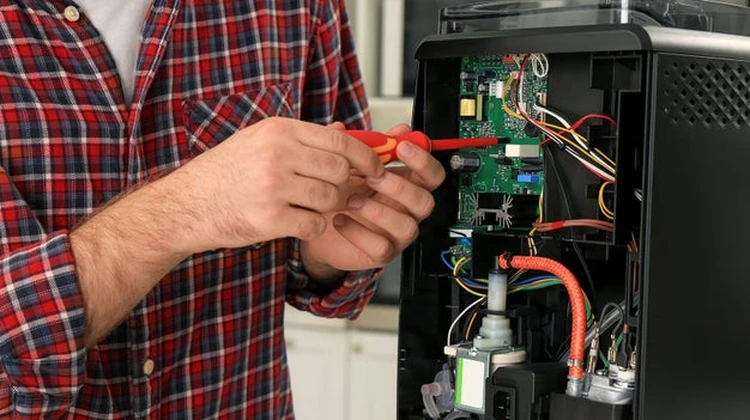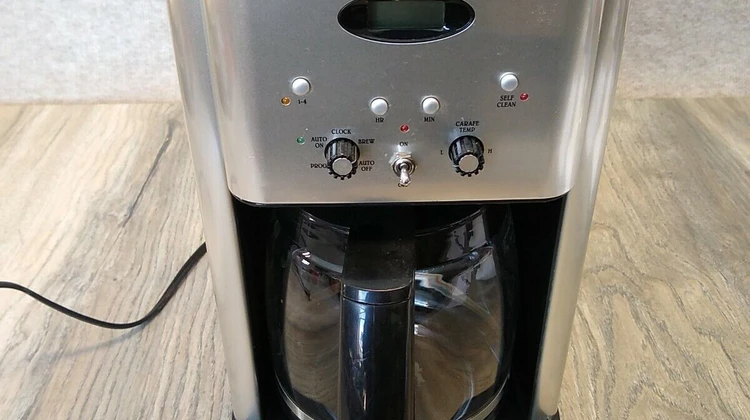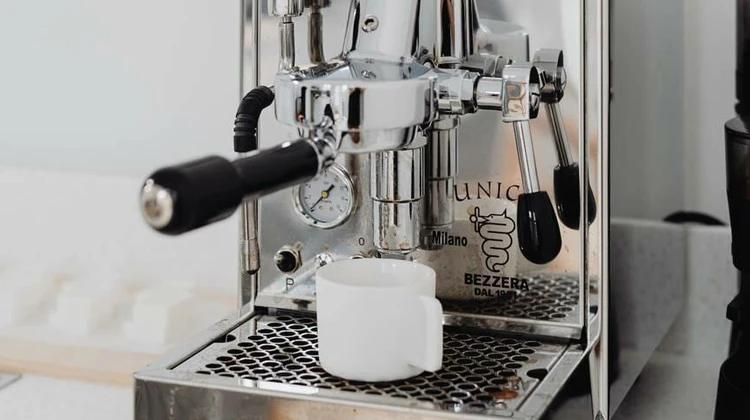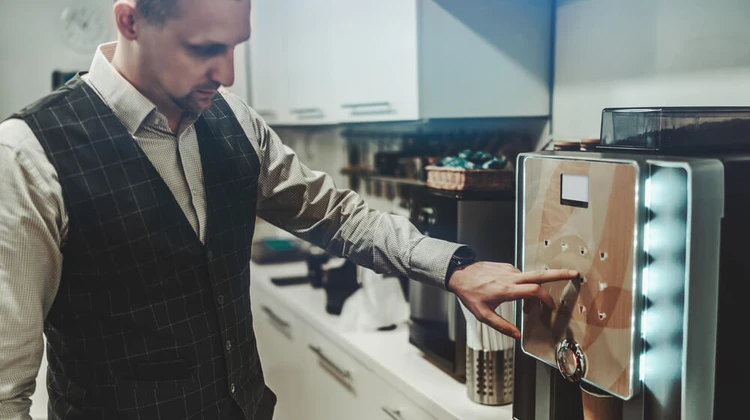Disclaimer: As an Amazon Associate, I earn commission from qualifying purchases.
In the ever-evolving landscape of home brewing, the pour over coffee maker has emerged as a cornerstone for coffee enthusiasts seeking both flavor and control. Research indicates that pour over methods can significantly enhance the taste and aroma of coffee, making them a preferred choice for many. This blog aims to provide expert-backed solutions to optimize your kitchen space and functionality, particularly focusing on the art and science of pour over coffee makers.
The Basics of Pour Over Coffee Makers
A pour over coffee maker is a manual brewing device that allows users to control the brewing process, resulting in a more personalized cup of coffee. The fundamental mechanics involve pouring hot water over freshly ground coffee beans placed in a filter. The water extracts the flavors and oils from the coffee grounds, creating a rich and flavorful brew.
The components of a pour over coffee maker typically include:
- Dripper: The main vessel where coffee grounds are placed.
- Filter: A paper or metal filter that holds the coffee grounds and allows water to pass through.
- Base: A stand or holder that supports the dripper.
Industry-standard guidelines from the Specialty Coffee Association (SCA) recommend a precise water-to-coffee ratio, typically around 17:1, to achieve optimal extraction.
A Brief History of Pour Over Coffee
The origins of pour over coffee can be traced back to early 20th-century Germany, where the pour over method was popularized by Melitta Bentz. Bentz invented the coffee filter in 1908, revolutionizing the way coffee was brewed. This innovation allowed for a cleaner, more flavorful cup of coffee by removing sediment from the brew.
Over the years, pour over coffee makers have evolved significantly. Key milestones include the introduction of the Hario V60 in Japan during the 1980s and the Chemex in the United States during the 1940s. These innovations have refined the pour over process, making it more accessible and appealing to coffee lovers worldwide.
Historical sources and coffee industry publications highlight the enduring popularity of pour over methods, which have become synonymous with specialty coffee culture.
Types of Pour Over Coffee Makers
There are several types of pour over coffee makers, each with unique characteristics and benefits. Some of the most popular include:
Hario V60
The Hario V60 is renowned for its conical shape and spiral ridges, which facilitate even extraction. It is available in various materials, including ceramic, metal, and plastic, each offering different thermal properties. Product specifications and reviews from reputable coffee blogs often praise the V60 for its versatility and ease of use.
Chemex
The Chemex is an iconic pour over coffee maker known for its hourglass shape and use of thick paper filters. This design results in a clean, sediment-free cup of coffee. The Chemex is also appreciated for its aesthetic appeal, making it a popular choice for both home and professional settings.
Kalita Wave
The Kalita Wave features a flat-bottomed design with three small holes, promoting even water distribution and extraction. It is favored for its consistency and user-friendly design, making it a reliable option for both beginners and experienced baristas.
Benefits of Using a Pour Over Coffee Maker
Using a pour over coffee maker offers several advantages, including:
- Enhanced Flavor Extraction: The manual pouring process allows for precise control over water flow and extraction time, resulting in a more nuanced flavor profile.
- Control Over Brewing Variables: Users can adjust water temperature, grind size, and pouring technique to tailor the brewing process to their preferences.
- Sustainability: Pour over methods often use reusable filters, reducing waste compared to single-use coffee pods or disposable filters.
Scientific studies on coffee extraction and flavor profiles support these benefits, highlighting the superior taste and aroma achieved through pour over brewing.
Step-by-Step Guide to Brewing Pour Over Coffee
Brewing pour over coffee involves several key steps. Here is a detailed guide:
Step 1: Prepare Your Equipment
Gather your pour over coffee maker, freshly ground coffee, a gooseneck kettle, a digital scale, and a timer. Ensure your coffee grounds are medium-fine to coarse, depending on your preferred extraction time.
Step 2: Heat the Water
Heat your water to between 195°F and 205°F (91°C and 96°C). This temperature range is optimal for extracting the full flavor from your coffee grounds.
Step 3: Bloom the Coffee
Place your filter in the dripper and add the coffee grounds. Pour just enough water to saturate the grounds (about twice the weight of the coffee) and wait for 30-45 seconds. This allows the coffee to “bloom,” releasing gases and preparing the grounds for extraction.
Step 4: Pour the Water
Slowly pour the remaining water over the coffee grounds in a circular motion, starting from the outer rim and spiraling toward the center. Maintain a consistent pour rate to ensure even extraction.
Step 5: Extract the Coffee
The total brewing time should be around 2.5 to 3 minutes. Adjust your pouring technique and grind size to achieve your desired extraction time and flavor profile.
Personal experience and professional tips from barista training emphasize the importance of precision and consistency in each step of the brewing process.
Essential Tools for Pour Over Brewing
To achieve the perfect pour over brew, you’ll need the following essential tools:
Gooseneck Kettle
A gooseneck kettle allows for precise control over the water flow, ensuring even extraction. Look for kettles with temperature control features for consistency.
Burr Grinder
A burr grinder provides a consistent grind size, which is crucial for even extraction. Opt for a grinder with adjustable settings to experiment with different grind sizes.
Digital Scale
A digital scale ensures accurate measurement of coffee grounds and water, helping you maintain the ideal water-to-coffee ratio. Choose a scale with a timer function for added convenience.
Product recommendations and reviews from trusted sources highlight the importance of investing in high-quality tools to enhance your pour over brewing experience.
Tips for Perfecting Your Pour Over Technique
Mastering the pour over technique requires practice and attention to detail. Here are some expert tips:
Blooming the Coffee
Always bloom your coffee by pouring just enough water to saturate the grounds and waiting for 30-45 seconds. This step is crucial for releasing gases and preparing the grounds for extraction.
Consistent Pour Rate
Maintain a consistent pour rate to ensure even extraction. Pour the water in a slow, circular motion, starting from the outer rim and spiraling toward the center.
Proper Extraction Timing
Aim for a total brewing time of around 2.5 to 3 minutes. Adjust your pouring technique and grind size to achieve your desired extraction time and flavor profile.
Professional barista techniques and industry standards emphasize the importance of these tips for achieving a consistently delicious cup of pour over coffee.
Comparing Pour Over Coffee Makers to Other Brewing Methods
Pour over coffee makers offer unique advantages compared to other brewing methods. Here’s a comparison:
French Press
The French press uses immersion brewing, where coffee grounds are steeped in hot water. While it produces a full-bodied cup, it can result in a grittier texture due to the presence of sediment. Pour over methods, on the other hand, produce a cleaner, more refined cup.
Espresso Machines
Espresso machines use high pressure to extract coffee, resulting in a concentrated shot of espresso. While espresso is ideal for specialty drinks like lattes and cappuccinos, pour over methods offer a more subtle and nuanced flavor profile.
Drip Coffee Makers
Drip coffee makers are convenient and user-friendly but often lack the control and precision of pour over methods. Pour over brewing allows for a more personalized and flavorful cup of coffee.
Data and comparisons from reputable coffee industry sources support these observations, highlighting the distinct advantages of pour over brewing.
Sustainability and Eco-Friendly Pour Over Brewing
Pour over brewing is not only delicious but also eco-friendly. Here are some environmental benefits:
Reduced Waste
Pour over methods often use reusable filters, reducing the waste associated with single-use coffee pods or disposable filters. This makes pour over brewing a more sustainable option.
Lower Energy Consumption
Pour over brewing requires minimal energy, as it relies on manual pouring rather than electricity. This results in lower energy consumption compared to automated brewing methods.
Environmental studies and sustainable coffee practices support these benefits, emphasizing the eco-friendly nature of pour over brewing.
Cleaning and Maintaining Your Pour Over Coffee Maker
Proper cleaning and maintenance are essential for the longevity and optimal performance of your pour over coffee maker. Here’s a step-by-step guide:
Step 1: Rinse the Dripper
After each use, rinse the dripper with hot water to remove any residual coffee oils and grounds. Avoid using soap, as it can leave a residue that affects the taste of your coffee.
Step 2: Clean the Filter
If using a reusable filter, clean it thoroughly with hot water and a soft brush. For paper filters, simply discard after use.
Step 3: Dry Completely
Ensure all components are completely dry before storing to prevent mold and bacteria growth. Store in a cool, dry place.
Manufacturers recommend these cleaning techniques to maintain the quality and performance of your pour over coffee maker.
Troubleshooting Common Issues with Pour Over Coffee
Even with the best techniques, issues can arise. Here are some common problems and solutions:
Over-Extraction
If your coffee tastes bitter or over-extracted, try using a coarser grind size or reducing the brewing time.
Under-Extraction
If your coffee tastes weak or under-extracted, try using a finer grind size or increasing the brewing time.
Inconsistent Brewing
Inconsistent brewing can be caused by uneven pouring or inconsistent grind size. Ensure you maintain a consistent pour rate and use a burr grinder for uniform grind size.
Troubleshooting guides from coffee experts and industry publications offer additional insights into resolving these common issues.
FAQs
What is the best grind size for pour over coffee?
The best grind size for pour over coffee is typically medium-fine to coarse, depending on your preferred extraction time and flavor profile. A burr grinder is recommended for achieving a consistent grind size.
How long should the brewing process take with a pour over coffee maker?
The brewing process with a pour over coffee maker should take around 2.5 to 3 minutes. Adjust your pouring technique and grind size to achieve your desired extraction time and flavor profile.
Can I use any type of coffee with a pour over coffee maker?
Yes, you can use any type of coffee with a pour over coffee maker. However, freshly roasted, high-quality beans are recommended for the best flavor and aroma.
How does a pour over coffee maker compare to a French press?
A pour over coffee maker produces a cleaner, more refined cup of coffee compared to a French press, which can result in a grittier texture due to the presence of sediment. Pour over methods offer more control over brewing variables, resulting in a more nuanced flavor profile.
Is pour over coffee brewing more sustainable than using a drip coffee maker?
Yes, pour over coffee brewing is more sustainable than using a drip coffee maker. Pour over methods often use reusable filters, reducing waste, and require minimal energy, resulting in lower energy consumption.
Conclusion
The pour over coffee maker is a versatile and rewarding tool for coffee enthusiasts seeking to elevate their brewing experience. By understanding the basics, exploring different types, and mastering the technique, you can enjoy a delicious and sustainable cup of coffee every time.
This blog has provided expert-backed, trustworthy information to help you optimize your kitchen space and functionality using a pour over coffee maker. Embrace the art of pour over brewing and savor the rich flavors it offers.







